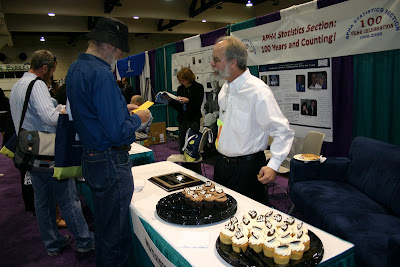
Well, the end is finally here, and who better to send us off than three former U.S. surgeons general.
At the standing-room only Annual Meeting Closing Session, public health workers poured in to hear words of wisdom from public health’s top movers and shakers: Past Surgeons General Richard Carmona, Joycelyn Elders and David Satcher. (And by the amount of camera flashes going off and rounds of enthusiastic clapping and woo-hoos, the three speakers resembled rock stars more than public health workers — of course, wouldn’t it be great if everyone viewed their local public health worker with the reverence usually reserved for the faces of MTV?)
During what was the best session that this blogger has ever attended over seven Annual Meetings, the three docs didn’t hold back — not once. When asked what their advice is for the next surgeon general, Elders said don’t let anything get in the way — always remember to have clarity of vision, be consistent in what you do, be committed and stay in control. After saying “amen” to Elders’ advice, Satcher gave some of his own: The new surgeon general must remember that she or he is part of a relay team — accept the baton and the responsibility to sustain and preserve past good works, while still reacting to new opportunities and challenges. After his “hallelujah” to Satcher’s advice, Carmona gave a bit of his own: Embrace a life-long commitment to the office.
“Once a surgeon general, always a surgeon general,” Carmona told the audience.
All three public health role models also spoke of the many obstacles they faced, and how the world of politics often tried — and was unfortunately sometimes successful — in hamstringing the sound science of public health. Satcher told of the surgeon general’s report on sexual health that the president decided not to support, Carmona told of a correctional health report that collapsed under political pressure, and Elders spoke of her STD prevention truth-telling and…well, I think we all remember what happened after that. But despite everything, the three docs persevered and continue today to rally for public health and prevention.
For this writer, Carmona seemed to put it best: “You are the surgeon general of the people of the United States,” not the surgeon general of the Republican Party or the Democratic Party, he said. The Office of the Surgeon General is often viewed as the most credible office in the federal government, Carmona said, so speak up for the science, keep the office untarnished and always represent the people.
And speaking of representing the people, we’ll end the 2008 Annual Meeting blog with some more wise words from outgoing APHA President Linda Degutis.
Voting, she said, is the “ultimate public health intervention.”
See you next year in Philadelphia for “Water and Public Health: The 21st Century Challenge.”
— K.K.
Photo by Jim Ezell/EZ Event Photography



















